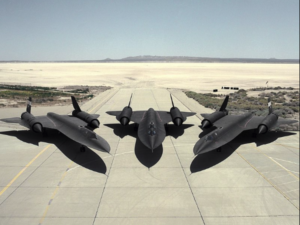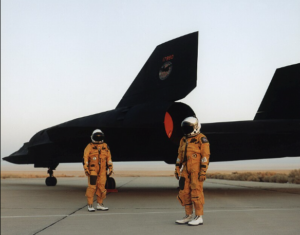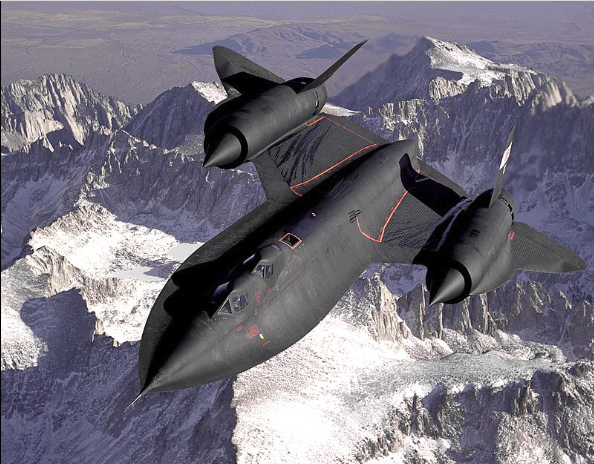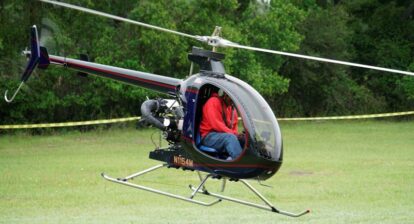The Lockheed SR-71 “Blackbird”: Unveiling the Mach 3+ Legend
 In the fast-paced world of aviation, one name stands out as the epitome of speed and innovation – the Lockheed SR-71 “Blackbird.” This iconic aircraft, shrouded in secrecy and mystique, has left an indelible mark on the history of aviation. From its groundbreaking technology to its appearances in pop culture, the SR-71 has captured the imagination of enthusiasts worldwide. In this article, we will delve into the fascinating history, important facts, technical details, and cultural impact of the SR-71 “Blackbird.”
In the fast-paced world of aviation, one name stands out as the epitome of speed and innovation – the Lockheed SR-71 “Blackbird.” This iconic aircraft, shrouded in secrecy and mystique, has left an indelible mark on the history of aviation. From its groundbreaking technology to its appearances in pop culture, the SR-71 has captured the imagination of enthusiasts worldwide. In this article, we will delve into the fascinating history, important facts, technical details, and cultural impact of the SR-71 “Blackbird.”
A Legacy of Innovation
The Lockheed SR-71 “Blackbird” is not just an aircraft; it’s a technological marvel that redefined the boundaries of aviation. Developed and manufactured by the American aerospace company Lockheed Corporation, the SR-71 earned its nickname “Blackbird” due to its distinctive black color. This long-range, high-altitude reconnaissance aircraft could achieve speeds exceeding Mach 3, making it the fastest plane on Earth during its operational years.
The Skunk Works Connection
The SR-71 wasn’t born overnight. It evolved from the Lockheed A-12 reconnaissance aircraft, a predecessor that laid the groundwork for this supersonic masterpiece. The project was shrouded in secrecy and carried out by Lockheed’s Skunk Works division, renowned for its innovative and classified projects. American aerospace engineer Clarence “Kelly” Johnson played a pivotal role in conceptualizing and bringing the SR-71 to life. His visionary ideas pushed the boundaries of what was considered possible in aviation.
In Pop Culture and Movies
 The SR-71 “Blackbird” has not only soared through the skies but also graced the silver screen. It made appearances in popular movies like the X-Men series and “Deadpool.” In the X-Men movies, the SR-71 was the official X-jet, taking on a different name in the comics and films. In “Deadpool” (2016), the X-Men used the SR-71 to confront the titular character wreaking havoc in the city, showcasing the aircraft’s enduring cultural appeal.
The SR-71 “Blackbird” has not only soared through the skies but also graced the silver screen. It made appearances in popular movies like the X-Men series and “Deadpool.” In the X-Men movies, the SR-71 was the official X-jet, taking on a different name in the comics and films. In “Deadpool” (2016), the X-Men used the SR-71 to confront the titular character wreaking havoc in the city, showcasing the aircraft’s enduring cultural appeal.
Breaking Records and Achieving the Impossible
The SR-71 was not just a movie star; it was a record-breaker in the real world too. In the film “Top Gun: Maverick,” Tom Cruise’s character hit an astonishing Mach 10 in the SR-72 Darkstar, a testament to the enduring fascination with supersonic flight. Even more remarkable is that the SR-71, despite being retired, still holds the title of the fastest plane on Earth. It now rests in a museum, a testament to its enduring legacy.
A Global Aviation Icon
The Lockheed SR-71 “Blackbird” wasn’t just an American legend; it captivated aviation enthusiasts around the world. Its impact extended beyond borders, leaving an indelible mark on the aviation industry globally. The aircraft’s speed and reconnaissance capabilities influenced the development of subsequent generations of reconnaissance planes and aerospace technology.
The Visionary Legacy
In the world of aviation, visionaries like Clarence “Kelly” Johnson and companies like Lockheed left an indelible mark. The SR-71 “Blackbird” stands as a testament to the human drive for innovation and exploration. It remains a symbol of what can be achieved when science, engineering, and imagination come together.
Conclusion
The Lockheed SR-71 “Blackbird” isn’t just a plane; it’s a symbol of human ingenuity and the pursuit of excellence in aviation. From its groundbreaking technology to its cultural impact, the SR-71 continues to inspire and awe generations of aviation enthusiasts. As it rests in museums, its legacy lives on, reminding us of the limitless possibilities of flight.
By Vicente Jubes – Aviation Network

Link to Wikipedia for more information
Remember to visit our Magazine section: Aviation Network Magazine
Remember to visit our Linkedin Group: Aviation Network on LinkedIn






